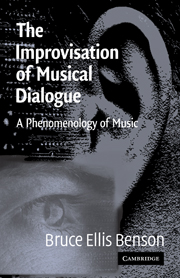TWO - Composing: From Ursprung to Fassung letzter Hand
Published online by Cambridge University Press: 14 January 2010
Summary
When does a musical work first appear? Is it born as a fully formed object or does it continue to develop after birth? If the latter, is there some identifiable point at which the composer (or perhaps someone else) declares its development “finished?” In this chapter, we will follow the movement from a musical work's origin (Ursprung) to its placement “in” a final text (what musicologists term the Fassung letzter Hand – the final manuscript).
For Husserl, ideal objects become truly ideal – which is to say, unchanging, permanent and available to all – by becoming embodied in written language. But, if writing serves merely to embody an ideal object, then that ideal object must have emerged and taken shape at some previous point. What stands as a prior step to an Urtext, then, is an Ursprung – a point of origin. Essential to Husserl's theory of ideal objects is the qualification that they are inherently historical: that is, they have an Erstmaligkeit, a point at which they first come into existence. According to Husserl, the first glimmer of an inchoate ideal object emerges as an immediate experience – an idea or insight – in the mind of a particular person. What characterizes this insight is its clarity and “self-evidence.” Yet this instantaneous grasp can be extremely fleeting in nature and, in any case, has no permanent existence.
- Type
- Chapter
- Information
- The Improvisation of Musical DialogueA Phenomenology of Music, pp. 33 - 76Publisher: Cambridge University PressPrint publication year: 2003



